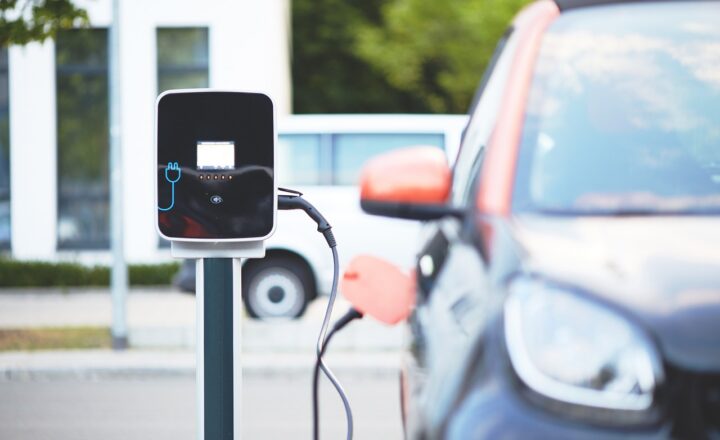Why Electric Cars Are Becoming More Affordable and Accessible
November 13, 2024

In recent years, electric cars have shifted from being a luxury item for eco-conscious consumers to becoming a viable option for the average car buyer. The decrease in prices, substantial government incentives, and rapid advancements in technology are converging to make electric vehicles (EVs) more affordable and accessible than ever before. This article explores the various factors contributing to this positive trend and examines what the future holds for electric cars.
1. The Historical Context of Electric Cars
Electric vehicles have a long and varied history. The first electric vehicle was introduced in the 1830s, and by the late 19th century, EVs gained significant popularity, even outpacing gasoline-powered cars. However, the discovery of crude oil and the internal combustion engine’s rise led to a decline in electric vehicle use during the 20th century.
In the early 21st century, electric cars made a resurgence. With growing concerns about air quality, greenhouse gas emissions, and fossil fuel depletion, the time was ripe for a new generation of electric vehicles. Major automakers and startups alike began investing heavily in EV technology, leading to the models we see on the roads today.
2. Decreasing Battery Costs Driving Affordability
One of the primary reasons electric cars are becoming more affordable is the significant decline in battery prices. Lithium-ion batteries, typically used in electric vehicles, have dropped in price by around 90% since 2010. This reduction directly impacts the overall cost of manufacturing EVs, allowing manufacturers to offer lower prices to consumers.
In addition to cost reduction, the improvements in battery technology have increased the efficiency and range of electric vehicles. Today’s EVs can achieve ranges of over 300 miles on a single charge, making them more practical for everyday use.
3. Government Incentives and Subsidies
Various governments around the world are offering incentives to promote electric vehicle adoption. These incentives include:
- Tax Credits: In countries like the United States and Canada, consumers can receive substantial tax credits for purchasing electric vehicles. These credits can significantly lower the overall price of the car, making it competitive with traditional gasoline vehicles.
- Rebates and Grants: Many state and local governments offer rebates or grants to EV buyers, further reducing the purchase price. For example, some regions have introduced cash incentives that can be applied directly at the point of sale.
- Reduced Registration Fees: Several states offer reduced or eliminated registration fees for electric vehicles, making ownership more affordable over time.
These initiatives not only lower initial costs but also encourage consumers to make the switch to eco-friendly transportation.
4. Expanding Charging Infrastructure
A common concern for potential electric vehicle buyers is the availability of charging stations. However, the charging infrastructure is rapidly expanding. Government investments, as well as initiatives from private companies, are facilitating the development of charging networks across cities, highways, and rural areas.
In recent years, charging stations have become more widely available in:
- Public Locations: Supermarkets, shopping centres, and parking lots now routinely feature charging points, allowing drivers to easily recharge their vehicles while they shop or dine.
- Residential Areas: Many local governments are promoting home charging solutions, incentivizing homeowners to install electric vehicle charging stations in their garages.
- Highway Corridors: Fast-charging stations are being installed along highways, mitigating range anxiety for long-distance travel and making electric cars a more feasible option for travelers.
This broadening of charging infrastructure is helping to eliminate barriers to EV adoption, making it easier for consumers to switch from gasoline vehicles.
5. Consumer Perception and Environmental Awareness
Consumer attitudes towards electric vehicles have shifted dramatically. As environmental awareness grows, eco-conscious choices are increasingly influencing car buying decisions. Now, consumers are not just looking for affordability but also for vehicles that align with their values.
Pollution from traditional cars, coupled with the climate crisis, has heightened awareness of the environmental impacts of fossil fuel dependence. Consequently, more consumers are considering electric vehicles as a greener alternative, which adds a strong motivator to the decision to purchase an EV.
Car manufacturers are also responding to this shift in perception. Brands are investing heavily in advertising campaigns that showcase the sustainability and technological advancements of their electric vehicle offerings. This further enhances consumer interest and acceptance of electric cars.
6. The Role of Automakers and Industry Competition
The automotive industry’s shift toward electric cars has led to a surge in competition. Major automakers are increasingly investing in EV technology, while new entrants in the market are bringing innovative solutions and features to the forefront. As competition heats up, we can expect:
- Wider Range of Options: Consumers now have a greater selection of electric vehicles available across various price points, styles, and configurations. From compact cars to SUVs and luxury vehicles, buyers can find an EV to suit their preferences and budgets.
- Advancements in Technology: Increased investment in R&D is resulting in improved battery performance, charging speed, and in-car features, enhancing the overall experience of driving an electric car.
- Competitive Pricing: As more manufacturers enter the electric vehicle space, competition will drive prices down, making EVs increasingly affordable for consumers.
This competitive landscape serves as a catalyst for rapid advancements in technology and decreases in prices, making electric cars more accessible to the masses.
7. The Future of Electric Vehicles
Looking ahead, the prospects for electric vehicles are exceedingly positive. Predictive analytics and market research suggest the following trends:
- Market Growth: The electric vehicle market is expected to grow exponentially, with major analysts projecting that EV sales could outpace gas vehicles by 2030 in several regions around the world.
- Further Price Reductions: The combination of economies of scale, technological advancements, and competition will likely continue to drive prices down, making EVs more accessible to everyday consumers.
- Enhanced User Experience: Innovations such as self-driving capabilities, improved infotainment systems, and advanced safety features are likely to enhance the overall user experience, making electric vehicles even more appealing.
In conclusion, electric cars are becoming more affordable and accessible due to advancements in battery technology, government incentives, increasing infrastructure, growing consumer awareness, and industry competition. As these trends continue to evolve, electric vehicles will increasingly become an integral part of our transportation landscape, shaping a more sustainable future.






